The current price of Dry G1 garlic this year ranges from Rs 150 to Rs 300 Per KG. Seed Price depend on seed quality. Last year in 2022, the price of dry garlic G1 reached the highest level from Rs 10,000 per kg to Rs 13,000 per kg. In Pakistan, garlic farming has been taken to a new level with the introduction of the Narc-G1 variety. This innovative garlic strain offers promising opportunities for farmers and enthusiasts alike. Let’s dive into the world of Narc G1 garlic farming in Pakistan and discover how it’s transforming the agricultural landscape.
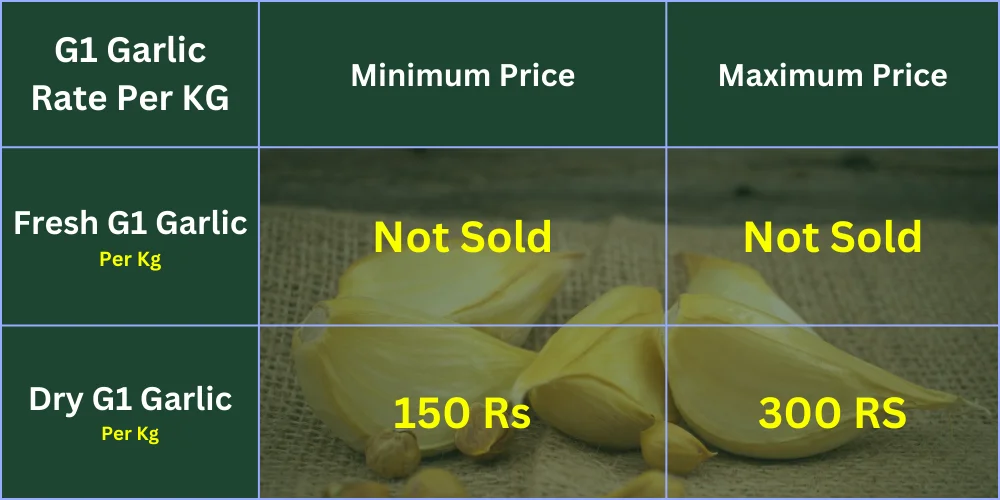
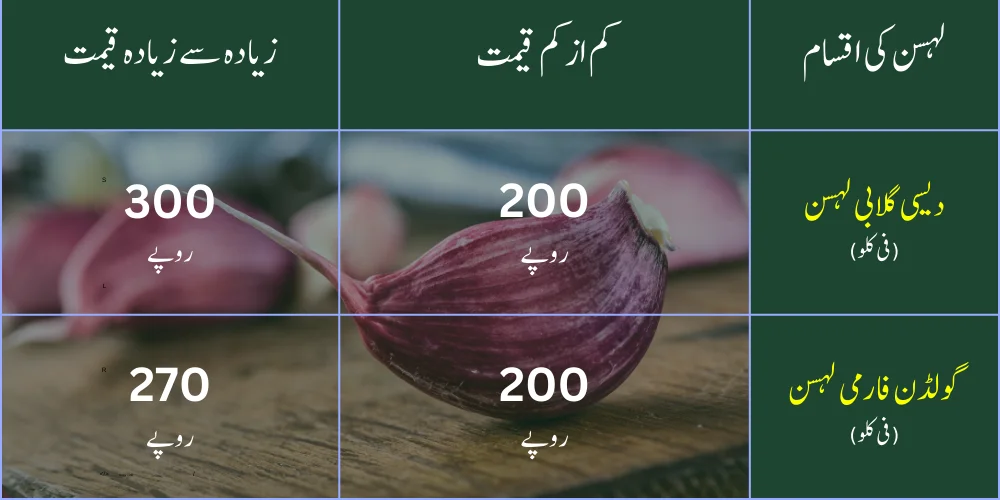
Check Also:
- ???? Today Wheat Price in Pakistan 2023
- ???? Today Cotton Price in Pakistan 2023
- ???? Today Rice Price in Pakistan 2023
- ???? Today Corn Rate in Pakistan
- Today Fertilizer Price in Pakistan
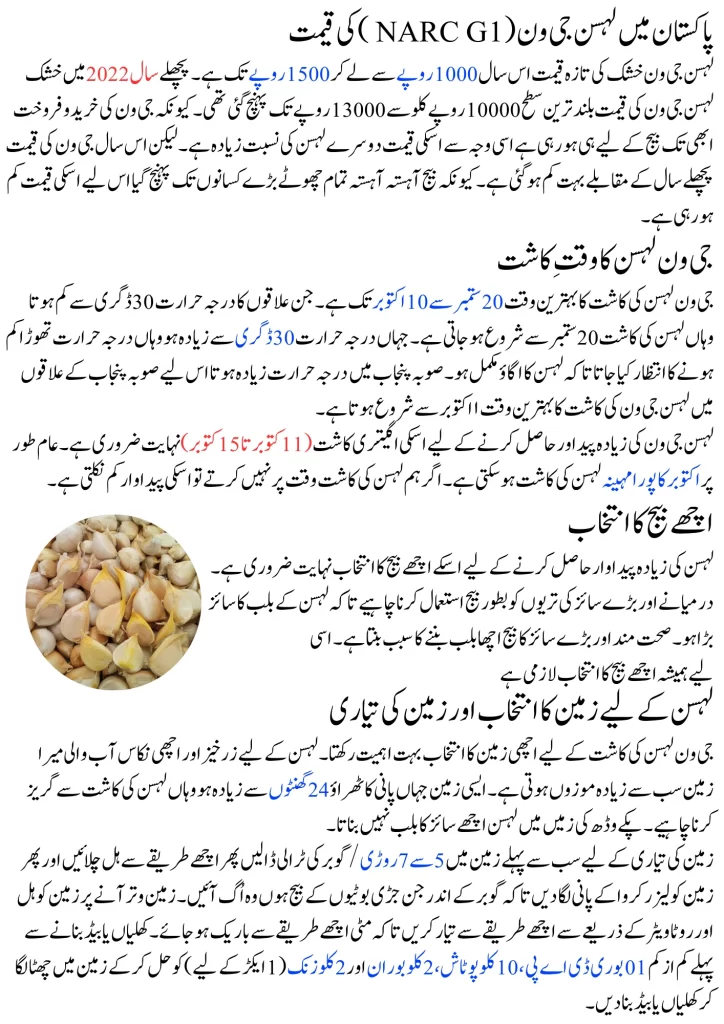
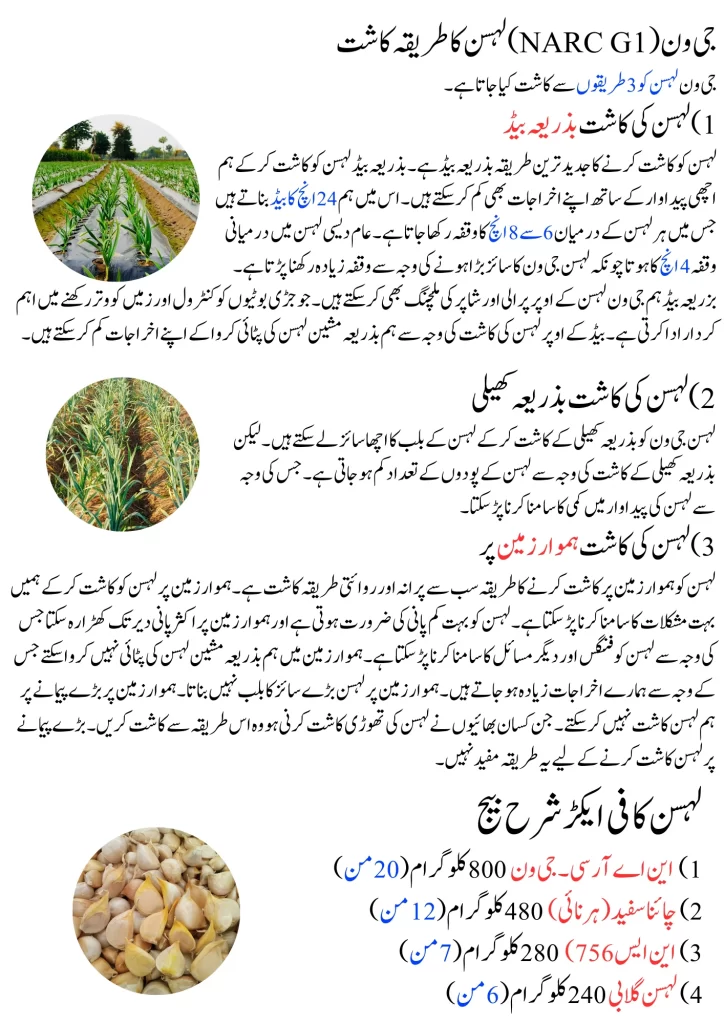
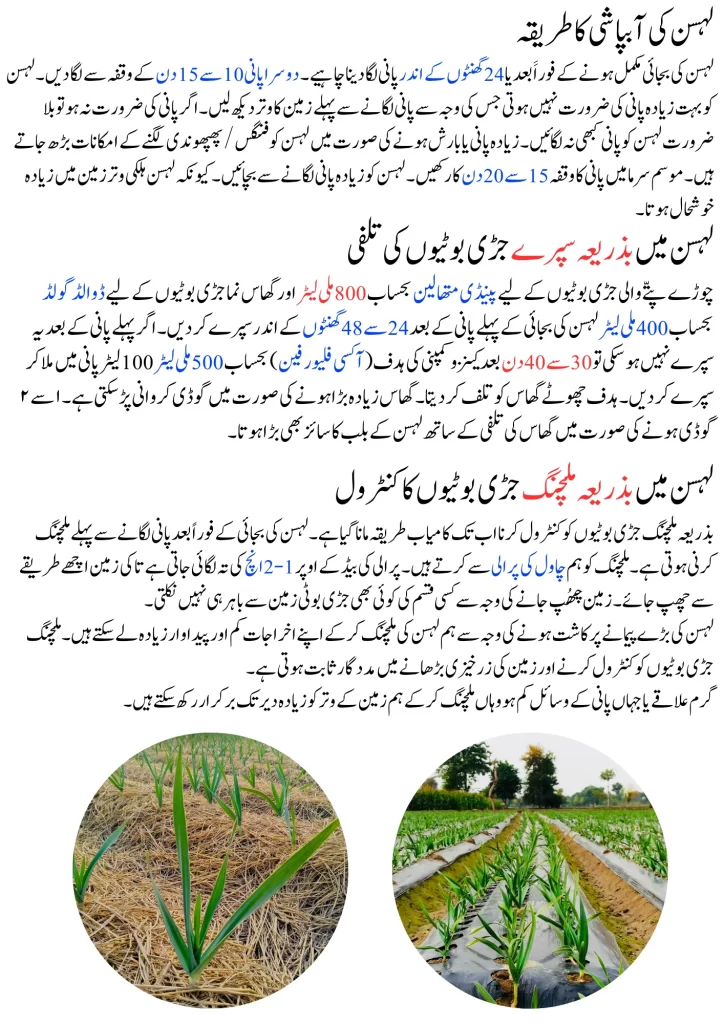

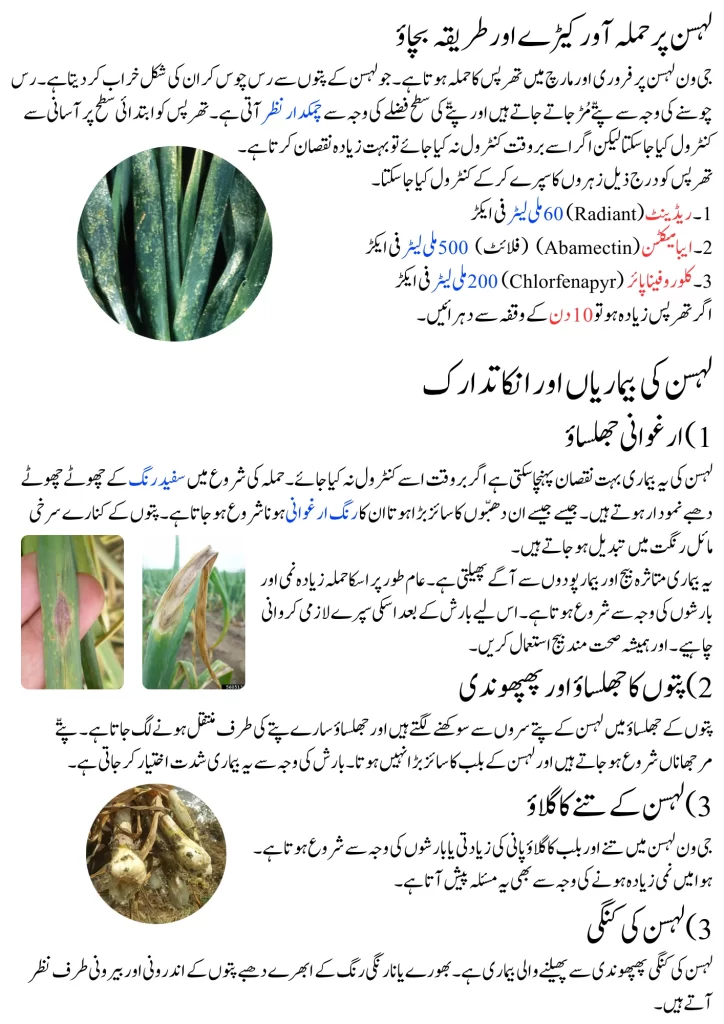
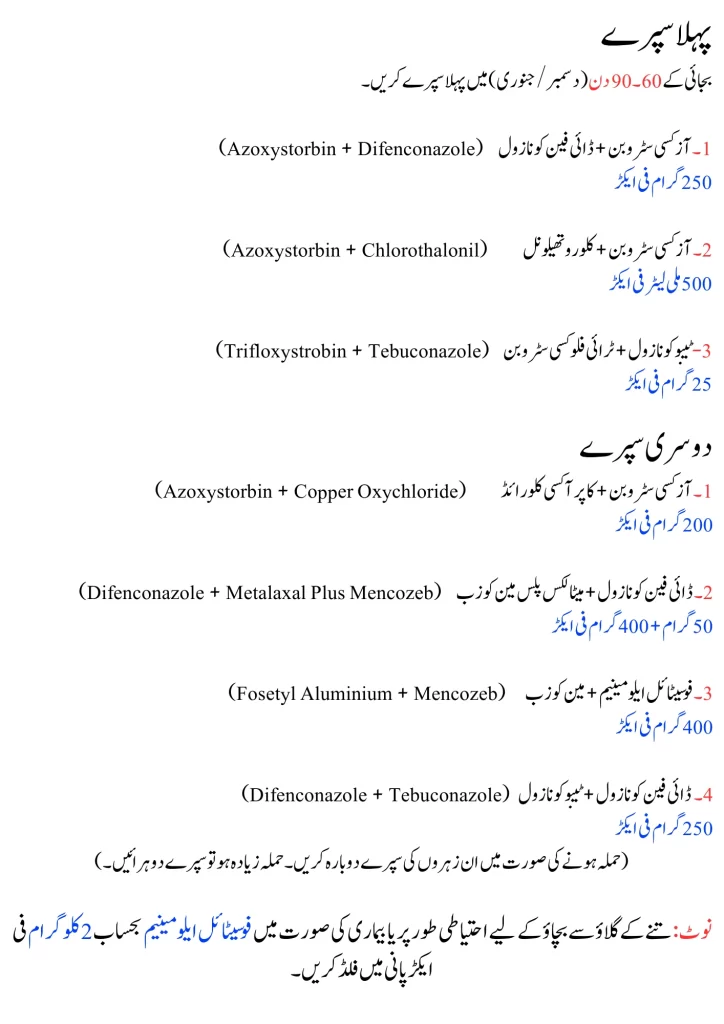
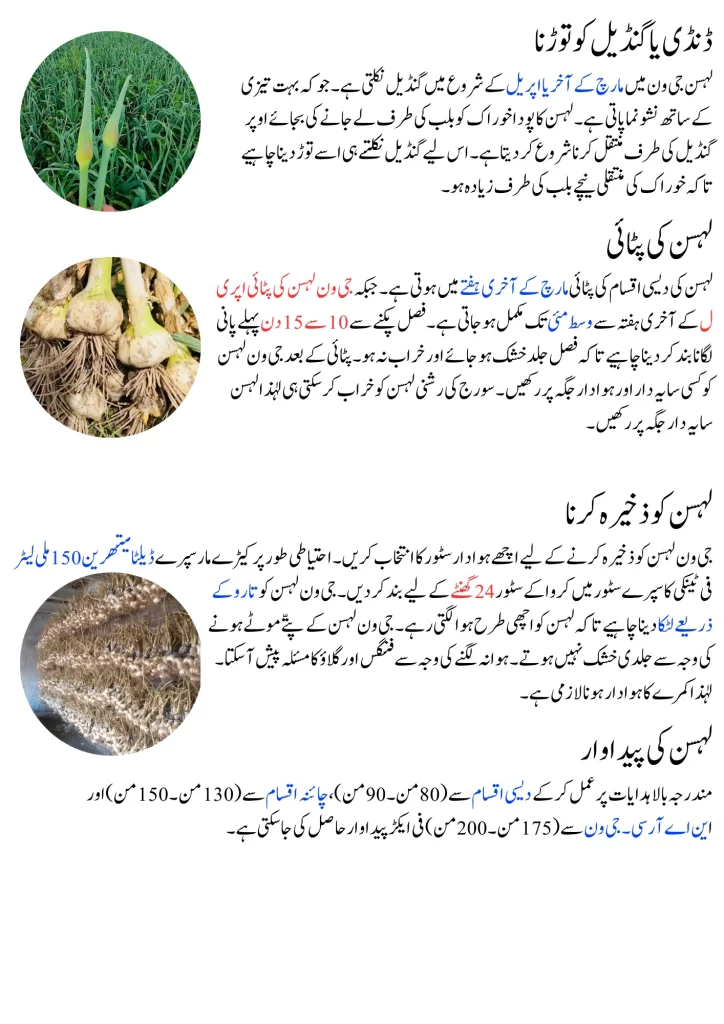
Dr. Humayun Akhtar Sahib has introduced a new variety of garlic, NARC G1 Garlic, after 4 to 5-years of research. NARC is a research center in Islamabad where Dr. Humayun researched G1 Garlic. It is known for its robust growth, disease resistance, and excellent flavor. This variety has gained popularity among farmers due to its adaptability to various climatic conditions and its potential for higher yields compared to traditional garlic varieties.
Narc G1 Garlic price in Pakistan
The current price of Dry G1 garlic this year ranges from Rs 150 to Rs 300 Per KG. In 2022, the price of dry garlic G1 reached the highest level from Rs 10,000 per kg to Rs 13,000 per kg. Because G1 Garlic is still being bought and sold for the seed, that’s why its price is higher than other garlic. But this year the price of NARC HG1 has come down a lot compared to last year. As the seed has gradually reached all the small and large farmers, its price is decreasing.
G1 garlic Cultivation time in Pakistan
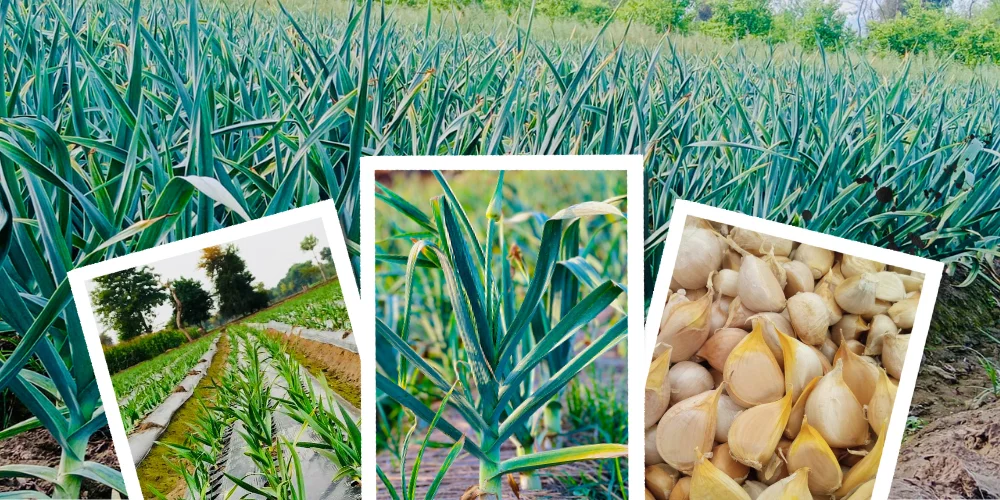
The best time to grow G1 garlic is from September 20 to October 10. In the areas where the temperature is less than 30 degrees, garlic cultivation starts from September 20. Where the temperature is more than 30 degrees, wait for the temperature to drop slightly so that the growth of garlic is complete. In the province of Punjab, the temperature is high, so the best time for the cultivation of garlic in the areas of the province of Punjab is from 1st October.
In order to get a high yield of garlic, it is very important to harvest it early (1st October to October 15). Generally, the whole month of October can be cultivated. If we do not cultivate garlic on time, its yield is less.
Good seed selection
Selection of good garlic seed is very important to get high production of garlic. Medium and large sized cloves should be used as seeds to grow garlic bulbs. A healthy and large-sized seed leads to good bulb formation. That is why it is always important to choose a good seed.
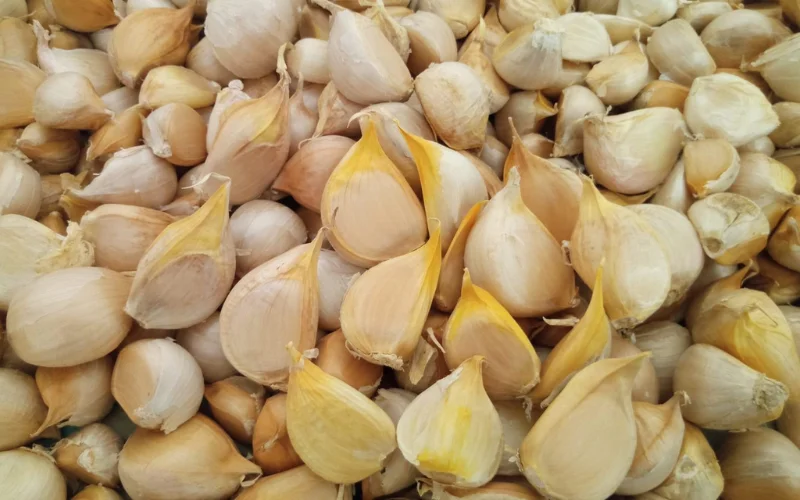
Land selection and land Preparation for Garlic
Choosing a good land for the cultivation of garlic is very important. Fertile and well-drained soil is best suited for garlic. Cultivation of garlic should be avoided in the land where the water is standing for more than 24 hours. Garlic does not form good sized bulbs in mature soil.
To prepare the land, first put 5 to 7 wheelbarrows / trolleys of dung in the ground, then plow well and then water the land with laser water so that the seeds of the herbs in the dung grow. Prepare the land well by plowing and rotavator when the soil is wetted so that the soil is fined well. Before making furrows or beds, dissolve at least 01 Bag of DAP, 10 kg of potash, 3 kg of boron and 3 kg of zinc (for 1 acre) and spread it into the soil and make furrows or beds.
3 Methods of G1 Garlic Cultivation in Pakistan
G1 garlic is cultivated in 3 ways.
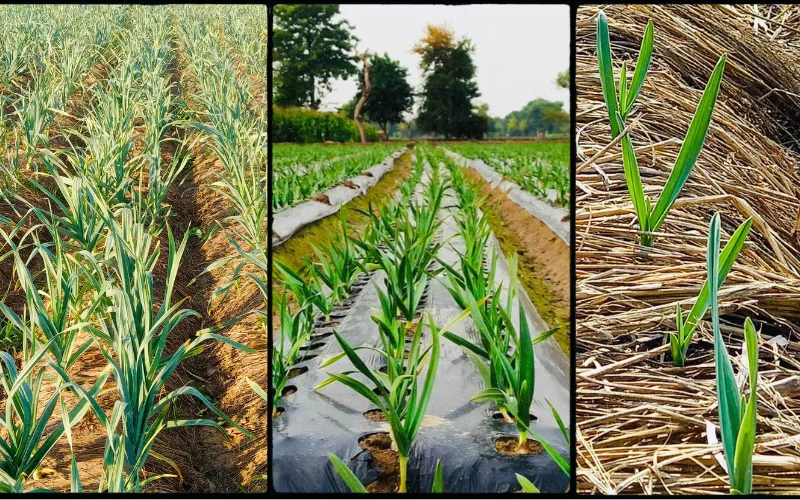
1) Cultivation of garlic by beds
The most modern method of growing garlic is through beds. By cultivating bed garlic we can reduce our costs with good yield. In this we make a bed of 24 inches with a gap of 6 to 8 inches between each garlic. Common native garlic has an average spacing of 4 inches, since the size of the garlic G1 is large, so the spacing needs to be longer. By the bed we can also mulch straw and chafer on top of G1 garlic. Which plays an important role in weed control and soil fertility. Because of the cultivation of garlic on the bed we can reduce our costs of manual garlic threshing.
2) Cultivation of G1 garlic by Kheeli
You can get a good size of garlic bulbs by cultivating garlic G1 by planting. But the number of garlic plants decreases due to intercropping. Due to which there may be a decrease in the production of garlic. Number of plants is directly impact the average of garlic.
3) Cultivation of Garlic on flat land
The method of cultivation of garlic on flat land is the oldest and traditional method of cultivation. We may face many difficulties by cultivating garlic on flat land. Garlic needs very little water, and on flat ground, water can often stand for long periods of time, which can cause garlic to suffer from fungus and other problems. In flat land we cannot thresh garlic by machine, due to which our expenses are high. On flat ground, garlic does not make large bulbs. We cannot grow garlic on a large scale on flat land. Farmer brothers who want to cultivate a little garlic should cultivate it in this way. On a large scale this method is not useful for cultivating garlic.
G1 Garlic irrigation Method
Water should be applied immediately after planting garlic or within 24 hours. Apply the second water at an interval of 10 to 15 days. Garlic does not need a lot of water, so check the soil before applying water. If there is no need for water, never water garlic unnecessarily. If there is too much water or rain, garlic is more susceptible to fungus/mildew. Keep water interval of 15 to 20 days in winter. Avoid overwatering the garlic. Because garlic would have thrived better in light soil.
2 Methods of Weed Control in G1 Garlic
There are two methods of weed control in garlic. Both are explain in following.
1. Weed control in Garlic by spray
Spray Pendi Mathalin at 800 ml for broadleaf herbs and Dual Gold at 400 ml for grasses within 24 to 48 hours after first watering of garlic. If this spray could not be done after the first watering, then after 30 to 40 days, Kanzo Company’s HADAF (Oxyfluorfen) 500 ml mixed with 100 liters of water and sprayed. The HADAF would destroy the small grass. Weeding may be necessary if the grass is too large. In case of 1 to 2 Goodi, the size of the garlic bulb would also be larger along with the weed loss.
2. Weed control in G1 Garlic by Mulching

Weed control by mulching has been found to be a successful method so far. Mulching should be done immediately after planting garlic before watering. We do mulching with rice straw. A 1-2 inch layer of rice bran is placed on top of the straw bed to cover the soil well. Because the earth is covered, no herb of any kind grows out of the earth.
Due to the large-scale cultivation of garlic, we can reduce our costs and increase production by mulching garlic. Mulching helps control weeds and increase soil fertility.
By mulching in hot areas or where water resources are scarce, we can maintain soil moisture for longer.
Use of fertilizers in G1 Garlic
The use of balanced fertilizers is very important to get good yield of garlic. So first get your soil analyzed for balanced use of fertilizers.
Use 1 bag of DAP, 10 KG of potash and 3 KG of Boron of Zinc while preparing the land.
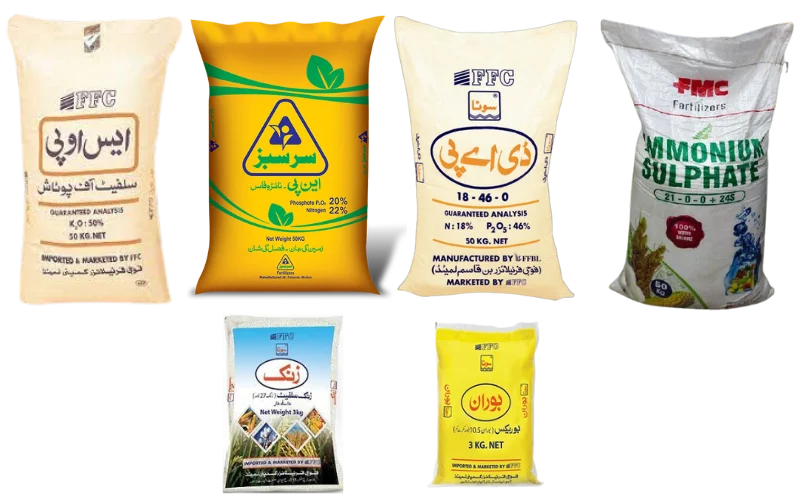
After 40-50 days use 1 Bag of ammonium sulphate. Apply 1 Bag of Nitrophos (NP) at 70 days crop. Apply humic acid from a multinational company in early February to soften the soil and allow the garlic to grow its bulb size.
In between you are the multinational company’s Amino Acid and NPK can also spray. which enriches your crop with immediate effect.
Pests Attacking Garlic and Methods of Prevention
G1 garlic is attacked by thrips in February and March. which sucks the juice from the garlic leaves and spoils their shape. Due to sucking the sap, the leaves become twisted and the surface of the leaf looks shiny due to the waste. Thrips can be easily controlled at the initial level but if not controlled in time, it causes a lot of damage.
Thrips can be controlled by spraying the following poisons.
1. Radiant 60 ml Per Acre
2. Abamectin (Flight ici) 500 ml Per Acre
3. Chlorfenapyr 200 ml Per Acre
If Thrips attack are more, Repeat spray after 10 day.
Diseases of garlic and their treatment
1) Leaf blight, Downy mildew and Purple Burns
In leaf blight, the leaves of garlic begin to dry up from the tips and the blight spreads to the entire leaf. The leaves begin to wither and the garlic bulb does not grow in size. Due to rain, this disease gets worse.
This disease of garlic can be very damaging if not controlled in time. At the beginning of the attack, small white spots appear. As the size of these spots increases, their color starts to turn purple. The edges of the leaves turn reddish in color.
The disease spreads beyond infected seed and diseased plants. Usually its attack starts due to high humidity and rains. Therefore, it must be sprayed after rain. And always use healthy seeds.
2) Garnish the stem of garlic
In G1 garlic, stem and bulb rot is triggered by overwatering or rainfall. This problem also occurs due to high humidity in the air.
3) Garlic Powdery Mildew
Garlic powdery mildew is a fungal disease. Raised brown or orange spots appear on the inner and outer sides of the leaves.
Fungicides First spray
Apply First spray 60-90 days after sowing (December/January).
1. (Azoxystorbin + Difenconazole) 250 grams per acre
2. (Azoxystorbin + Chlorothalonil) 500 ml per acre
3. (Tebuconazole + Trifloxystrobin) Bayer Nativo 25 grams per acre
(If there is an attack, repeat the spray of these poisons. If the attack is heavy, repeat the spray.)
Note: To prevent stem blight, flood Fusityl Aluminum at the rate of 2 kg per acre as a precaution or in case of disease.
Fungicides Second spray
1. (Azoxystorbin + Copper Oxychloride) 200 grams per acre
2. (Difenconazole + Metalaxal Plus Mencozeb) 50 grams + 400 grams per acre
3. (Fosetyl Aluminum + Mencozeb) 400 grams per acre
4. (Difenconazole + Tebuconazole) 250 grams per acre
To break off a stalk / Gundel
In the late March or early April, the garlic emerges. Which grows very fast. The garlic plant starts to move food up to the bulb rather than to the bulb. Therefore, the gondle should be broken as soon as it emerges so that the transfer of food is more towards the bulb below.
G1 Garlic Harvesting
Other varieties of garlic are harvested in the last week of March. While the beating of G1 garlic is completed from the last week of April to mid-May. Irrigation should be stopped 10 to 15 days before the crop ripens so that the crop dries quickly and does not spoil. After pounding, keep the G1 garlic in a shady and ventilated place. Sunlight can spoil garlic, so keep garlic in a shady place.
G1 Garlic Storage
Choose a well-ventilated store to store garlic. As a precautionary measure, spray Delta Methrin 150 ml per tank in the store and close the store for 24 hours. G One garlic should be hung by a wire to keep the garlic well aerated. Because the leaves of G1 garlic are thick, they do not dry quickly. Lack of ventilation can lead to fungus and mold problems. So the room must be ventilated.
Other Varieties and G1 Garlic Production
By following the above instructions, from the Desi Garlic varieties (80 mun-90 mun), from the Chinese varieties (130 mun-150 mun) and (175 mun-200 mun) per acre yield can be obtained from NARC G1 Garlic.
G1 Garlic cultivation in Pakistan
1. Selection of Land:
Choose a well-drained piece of land with good sunlight for garlic cultivation. The soil should be sandy-loam or loamy, which means it’s a mix of sand, silt, and clay that allows water to drain well.
2. Preparing the Soil:
Plow the land to loosen the soil and remove any weeds or debris. You can add organic matter like compost to improve soil fertility and structure.
3. Seed Selection and Preparation:
Garlic cloves are used as seeds. Separate the cloves from the garlic bulb and choose the healthy and bigger cloves for planting. Leave the skin on the cloves.
4. Planting:
Plant the garlic cloves with the pointed end facing upwards. Make small holes in the soil about 2-3 inches deep and place the cloves inside. Space them about 6-8 inches apart in rows, and keep around 12-18 inches between rows.
5. Watering:
Water the G1 garlic after planting to settle the soil around the cloves. During the growing season, provide regular water, but be careful not to overwater, as garlic doesn’t like waterlogged soil.
6. Fertilization:
Apply balanced fertilizer a couple of times during the growing period. Nitrogen-rich fertilizers can be applied in small amounts to encourage healthy leaf growth.
7. Mulching:
Apply a layer of organic mulch, like straw, to help retain moisture, suppress weed growth, and protect the G1 garlic bulbs.
8. Pest and Disease Management:
Keep an eye out for pests like aphids and diseases like white rot. You can use organic pesticides if needed or follow crop rotation practices to prevent disease buildup.
9. Garlic Harvesting:
Harvest time usually comes when the leaves start turning yellow and drying up, usually around 6-8 months after planting. Gently dig out the bulbs from the soil using a garden fork. Allow the bulbs to dry in a shaded, well-ventilated area for a couple of weeks.
10. Garlic Storage:
After drying, trim the roots and tops, leaving about an inch of stem. Store the bulbs in a cool, dry place in mesh bags or woven baskets. This can help the garlic last for several months.
Remember, G1 garlic cultivation requires some care and attention, but it can be quite rewarding when you see those fresh garlic bulbs at the end of the process!
Advantages of Narc G1 Garlic Farming
- Higher Yields: One of the most significant advantages of Narc-G1 garlic is its potential for higher yields. This means more garlic bulbs per unit of land, translating to increased profits for farmers.
- Disease Resistance: Narc-G1 garlic is bred to resist common diseases that can affect garlic crops. This resistance reduces the need for excessive pesticide use, making it a more environmentally friendly choice.
- Adaptability: Whether you’re farming in the plains of Punjab or the mountainous regions of Khyber Pakhtunkhwa, Narc G1 garlic shows adaptability to a wide range of climates and soil types.
- Premium Quality: The garlic bulbs produced by Narc G1 are known for their superior quality. They have a strong flavor and a longer shelf life, making them a preferred choice for consumers.
- Economic Benefits: With the demand for garlic on the rise both domestically and internationally, cultivating Narc G1 garlic can be a profitable venture for farmers, contributing to rural economic growth.
G1 Garlic also called Elephant Garlic
NARC G1 garlic also called elephant garlic in USA, due to it’s size. Elephant garlic is a type of plant that looks like a very large garlic bulb. It’s actually related to garlic, but it’s much bigger and milder in flavor. The bulb can be quite large and has a papery outer covering like regular garlic. Despite its name, elephant garlic isn’t a true garlic; it’s more closely related to leeks. People use elephant garlic in cooking, just like regular garlic, to add flavor to dishes. It’s often roasted or sautéed and can be a tasty addition to various recipes.
Steps to Successful Narc G1 Garlic Farming
- Variety Selection: Obtain certified Narc G1 garlic seeds from reputable sources like agricultural research centers or certified seed suppliers.
- Land Preparation: Choose well-drained soil with good fertility. Prepare the land by plowing and leveling to create a suitable seedbed.
- Planting: Plant individual garlic cloves with the pointed end facing upwards. Maintain a proper spacing of around 6-8 inches between cloves and rows.
- Fertilization: Apply organic or balanced fertilizers to ensure healthy growth. Monitor nutrient levels and adjust fertilization practices accordingly.
- Irrigation: Garlic requires consistent moisture throughout its growth cycle, especially during bulb formation. Implement an irrigation schedule based on the local climate conditions.
- Weed and Pest Management: Regularly remove weeds to minimize competition for nutrients. Practice integrated pest management to control pests and diseases effectively.
- Harvesting: Harvest garlic when the leaves begin to turn yellow and fall over. Carefully dig out the bulbs and allow them to cure in a dry, well-ventilated area for a few weeks.
- Storage: After curing, store the garlic bulbs in a cool, dry place. Proper storage ensures a longer shelf life and maintains the quality of the garlic.
Importance of G1Garlic & other Garlic
Garlic is a special plant that many people use in cooking because it adds a strong and delicious flavor to food. But it’s not just tasty – it’s also really good for our health. Garlic has natural compounds that can help keep our bodies healthy in different ways:
- Good for the Heart: Garlic can help our heart by lowering the levels of certain things in our blood that might not be good for us. This can make our heart healthier and reduce the chances of heart problems.
- Bursting with Nutrients: Despite its unassuming appearance, garlic is packed with essential nutrients. It contains vitamins like Vitamin C and Vitamin B6, as well as minerals like manganese and selenium. These nutrients play a important role in maintaining health.
- Fighting Germs: Garlic has properties that can help fight off germs, like bacteria and viruses. It’s like a natural defender for our body.
- Boosting Immunity: Garlic has been revered for its immune-boosting properties for centuries. It contains compounds that help support the immune system, making your body better equipped to fight off illnesses and infections. Including garlic in your diet can be a delicious way to stay healthier.
- Helping Digestion: Garlic can also be good for our stomach. It might help our body digest food better and keep our stomach happy.
- Adding Flavor: Apart from health benefits, garlic also makes our food taste really good. Many dishes just wouldn’t be the same without that special garlicky flavor.
- Natural Antibacterial and Antifungal: The compounds found in garlic have natural antibacterial and antifungal properties. This makes it a fantastic addition to your diet to help fight off infections and maintain good hygiene, both internally and externally.
So, garlic is more than just a yummy ingredient in our food – it’s like a little health booster too!
Effective G1 Garlic Fertilizer Management
Garlic, with its pungent aroma and versatile flavor, is a staple in kitchens worldwide. Whether you’re a seasoned gardener or just starting out, providing the right nutrients to your garlic plants is essential for a bountiful harvest. Enter garlic fertilizer management – a key factor in ensuring your garlic crop thrives. In this guide, we’ll break down the basics of garlic fertilizer in simple terms, so you can give your garlic the best care it deserves.
Why Fertilize G1 Garlic?
Imagine trying to run a marathon without proper fuel – you wouldn’t get very far. Similarly, garlic needs nutrients to grow strong and produce those delicious bulbs. Fertilizing your garlic plants provides them with the necessary elements like nitrogen, phosphorus, and potassium (N-P-K) that promote healthy growth, sturdy stalks, and robust bulbs.
Timing is Everything
Just like a well-choreographed dance, timing matters in garlic fertilizer management. Garlic is a fall-planted crop, and its fertilizer needs change throughout its growing cycle. Here’s a breakdown of when to fertilize:
- At Planting: Before tucking those garlic cloves into the soil, apply a balanced fertilizer with equal parts nitrogen, phosphorus, and potassium. This gives your garlic a gentle kick-start.
- Early Growth: As the green shoots emerge, a dose of nitrogen-rich fertilizer can boost leafy growth. This is especially important for forming ample foliage, which powers bulb development.
- Bulb Formation: When your garlic plants are in the bulb-forming stage, switch to a fertilizer with higher phosphorus and potassium content. This encourages the development of plump, flavorful bulbs.
Choosing the Right Fertilizer
Walking down the fertilizer aisle can be overwhelming, but fear not! Look for fertilizers labeled as “complete” or “all-purpose.” These contain a mix of the essential nutrients your garlic craves. Opt for granular slow-release fertilizers, as they provide a steady supply of nutrients over time, reducing the risk of overfeeding.
How to Apply Fertilizer in G1 Garlic
The secret to garlic fertilizer success lies in proper application. Follow these steps:
- Measure: Read the fertilizer label to determine the recommended amount. More isn’t always better – over-fertilizing can harm your garlic.
- Spacing: Sprinkle the fertilizer evenly around the base of your garlic plants, ensuring it’s not in direct contact with the stems or leaves.
- Watering: After applying the fertilizer, water the area thoroughly. This helps nutrients seep into the soil where the roots can access them.
- Mulching: Covering the soil with organic mulch, like straw or compost, can help retain moisture and prevent nutrient leaching.
Cautions and Considerations
While fertilizer is garlic’s friend, moderation is key. Too much fertilizer can lead to excessive leaf growth at the expense of bulb formation. Keep an eye out for signs of over-fertilization, such as yellowing leaves or unusually tall, weak stems.
Additionally, consider your soil’s health. Performing a soil test before planting can help you tailor your fertilizer regimen to your garden’s specific needs.
Top 10 Garlic Producing Countries Around the World
Garlic, with its distinctive aroma and flavor, is a beloved ingredient in kitchens worldwide. But have you ever wondered which countries are the leading producers of this pungent bulb? In this article, we’ll take a journey around the globe to explore the top 10 garlic-producing countries, showcasing their vital role in bringing this flavorful spice to our tables.
- China: Topping the list is China, a garlic-producing powerhouse. Its vast agricultural lands and favorable climate make it the world’s largest garlic producer. The provinces of Shandong, Henan, and Jiangsu contribute significantly to China’s garlic production.
- India: India comes in strong at second place. Its diverse climate zones allow for year-round garlic cultivation. States like Madhya Pradesh, Gujarat, and Rajasthan are notable contributors to India’s garlic output.
- Bangladesh: This South Asian country holds a prominent place in garlic production due to its fertile lands and suitable weather conditions. Farmers in regions like Mymensingh and Jessore play a vital role in Bangladesh’s garlic cultivation.
- South Korea: South Korea’s temperate climate supports garlic farming, particularly in provinces such as South and North Gyeongsang. The country’s garlic is renowned for its distinct flavor and aroma.
- Egypt: Moving to the Middle East, Egypt has a long history of garlic cultivation dating back to ancient times. Its Nile Delta region provides fertile soil for garlic to thrive, making it a significant garlic exporter.
- Russia: Despite its cold climate, Russia manages to produce a substantial amount of garlic. This is mainly due to cultivation in the southern regions such as Krasnodar and Rostov.
- United States: In the Americas, the United States stands out as a garlic-producing country. California, with its Mediterranean-like climate, leads the way, contributing to a considerable portion of the country’s garlic production.
- Argentina: South America’s contender on this list is Argentina. Regions like Mendoza and San Juan have optimal conditions for garlic cultivation, enabling the country to maintain a steady garlic output.
- Spain: Spain represents Europe in the top 10, with its garlic production centered around the Castilla-La Mancha and Andalusia regions. Spanish garlic is esteemed for its quality and taste.
- South Africa: Rounding off the list is South Africa. Its moderate climate allows for garlic farming, primarily in provinces like Limpopo and Mpumalanga.
Conclusion
Garlic is important crop that used in daily life routine for cooking. G1 garlic price high due to it’s seed. This year its price decreases. G1 popular for its shelf life. Pakistan import garlic from China because production of garlic in Pakistan is low. Last 3 to 4 years in Pakistan garlic production increases. But its need more production of garlic.

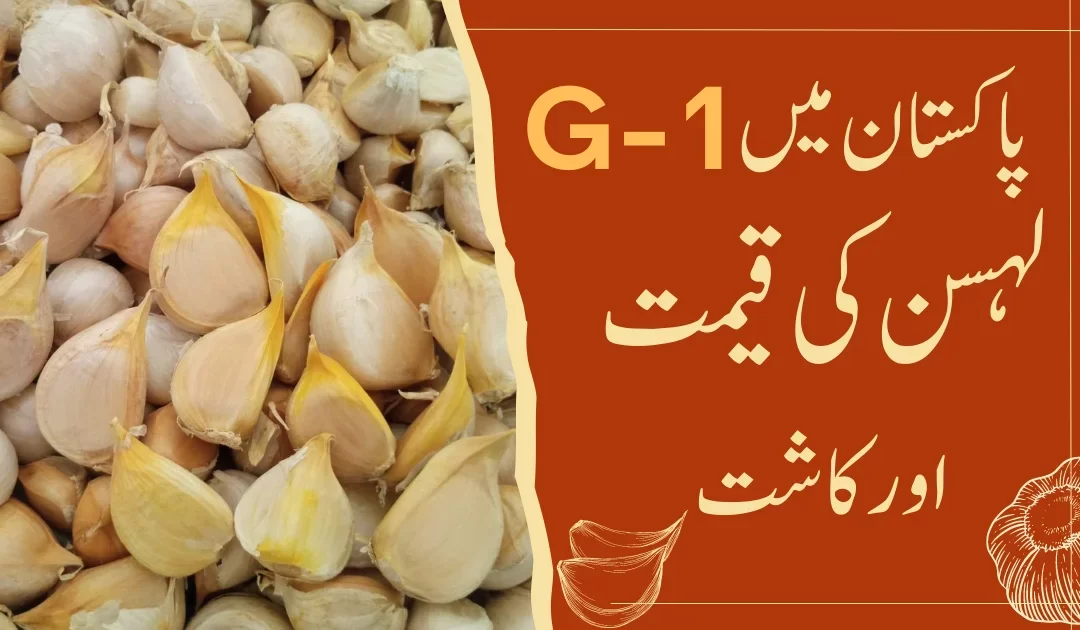
I want to sale dry G1 garlic anyome wants to perchase please contect
03451502443
I want to sell 200 mund of G1 Garlic